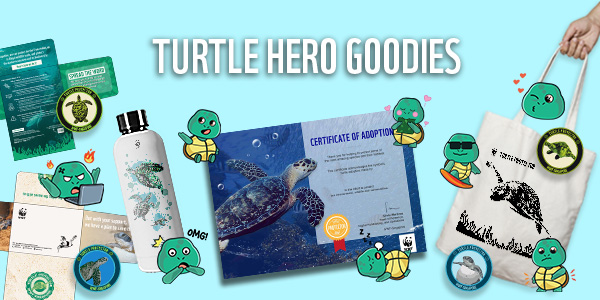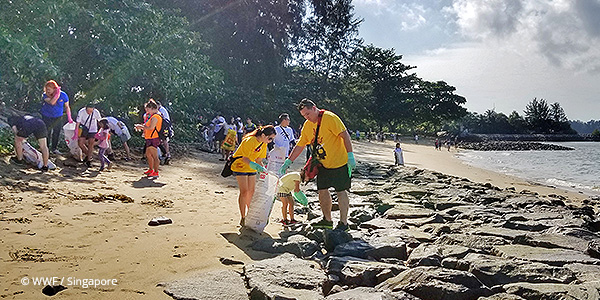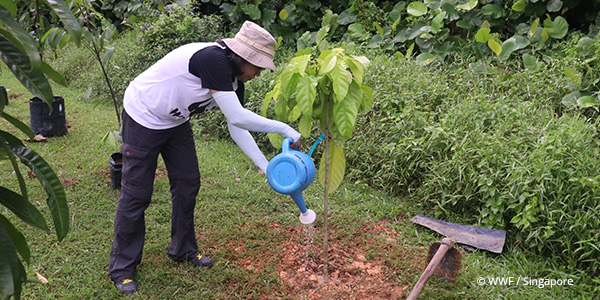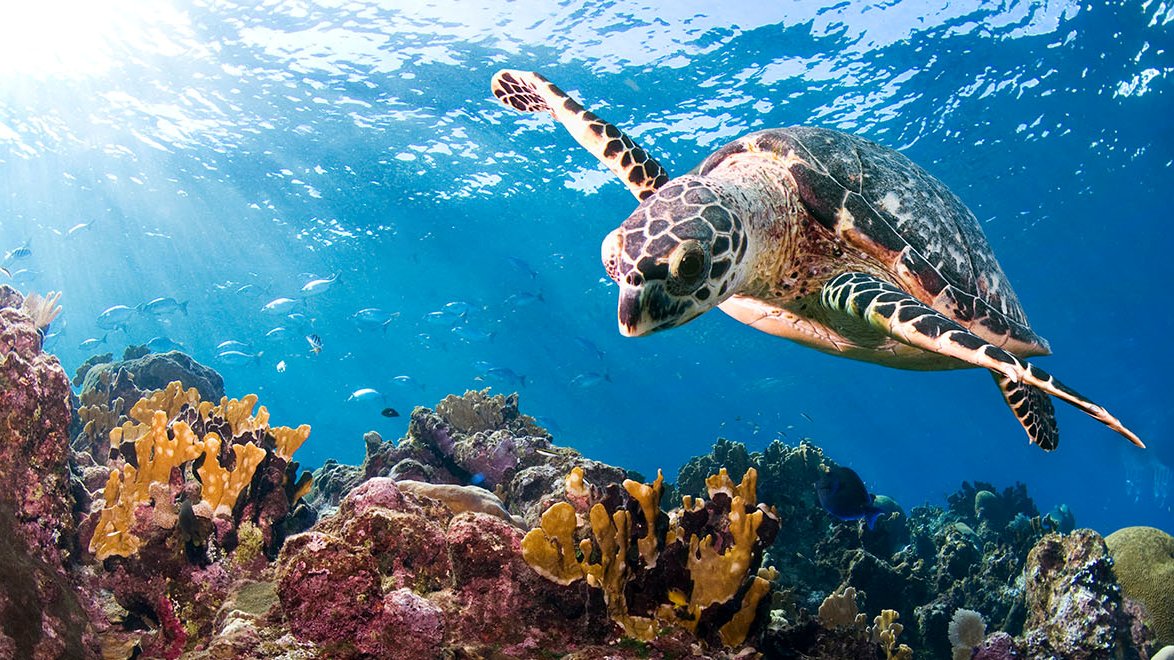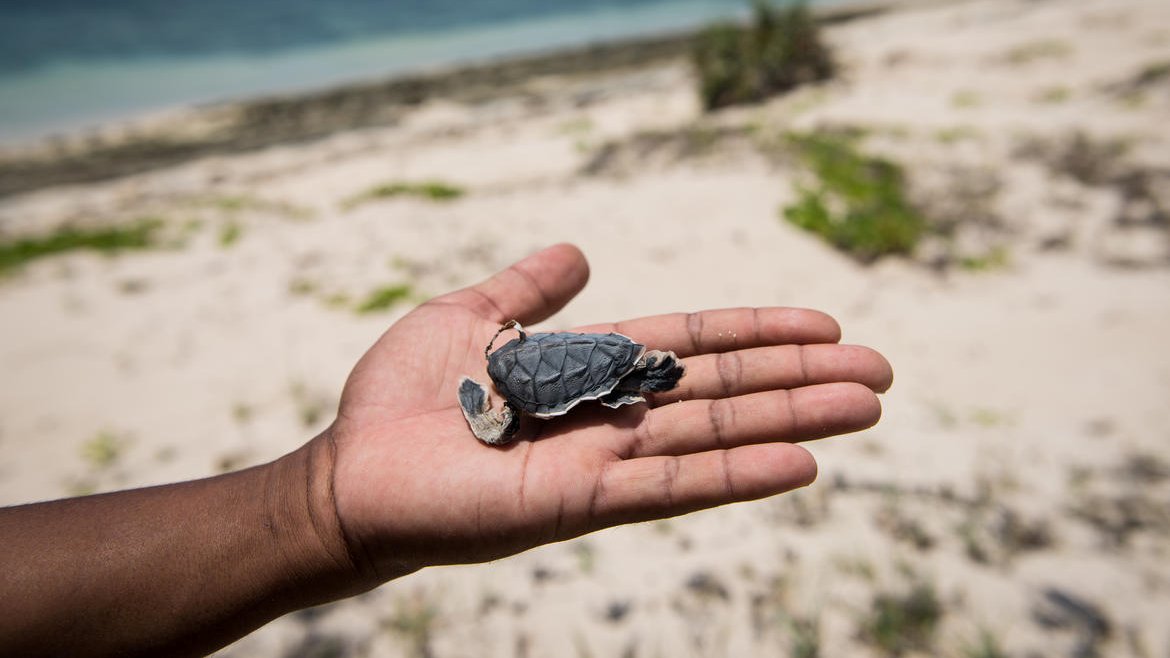ONLY 1 IN 1,000 HATCHLINGS SURVIVE
Help us protect sea turtles in Singapore from extinction. One action from you could save many hatchlings.
BECOME A TURTLE PROTECTOR
YOU CAN RECEIVE
-
Adoption e-Certificate
-
Exclusive event invitations
-
Fun downloadables
-
Updates from the field
-
Wildlife Origami paper
-
Wildlife Protector badge
-
Exclusive WWF water bottle
-
GOTS-certified tote bag
80,000 TURTLES EXPLOITED EVERY YEAR IN THE LAST DECADE
Sea turtles have been around for centuries and play an invaluable role in ocean and coastal ecosystems. But today, six out of seven sea turtle species are facing existential threats, ranging from marine pollution to illegal trade.
Home to both Hawksbill and Green sea turtles, Singapore has an important role to play in conserving these populations and halting illegal turtle trade. With only 1 in 1,000 hatchlings making it to adulthood, we need your help now in order to protect the future of our local sea turtles.
Home to both Hawksbill and Green sea turtles, Singapore has an important role to play in conserving these populations and halting illegal turtle trade. With only 1 in 1,000 hatchlings making it to adulthood, we need your help now in order to protect the future of our local sea turtles.
Why protect turtles?
Sea turtles are a vital part of the food chain. They graze on seagrasses and coral and keep them healthy.
Turtles also spread nutrients across the sea and on nesting beaches, improving the health and resilience of seagrass beds and dune ecosystems.
Turtles also spread nutrients across the sea and on nesting beaches, improving the health and resilience of seagrass beds and dune ecosystems.
FACTS

STATUS
Critically Endangered

SCIENTIFIC NAME
Eretmochelys imbricata

DIET
Sponges, jellyfish, crustaceans

WEIGHT
40 to 70 kg

LENGTH
Up to 35 inches

HABITAT
Reefs, ocean
Hawksbill Turtle Nesting Areas in Southeast Asia

THREATS TO THEIR SURVIVAL
Sea turtles around the world are being killed and sold in wildlife markets as exotic food, oil, leather, and accessories. Between 2015 and 2019, over 1,800 live and 1,200 dead turtles, 1,900 shell pieces and jewellery, along with thousands of kilograms of meat and tens of thousands of eggs, were intercepted and seized at several Southeast Asian ports.
The illegal trade of sea turtles is alive and thriving, and appears to be moving increasingly underground—making it harder than ever to trace the supply and protect vulnerable populations.
The illegal trade of sea turtles is alive and thriving, and appears to be moving increasingly underground—making it harder than ever to trace the supply and protect vulnerable populations.
Every year, hundreds of thousands of sea turtles are accidentally caught in shrimp trawl nets, longline hooks, and gillnets around the world. This threat has depleted sea turtle populations worldwide. Many drown once captured as sea turtles need to reach the surface to breathe.
Not only sea turtles, abandoned fishing gear is also the deadliest form of plastic debris for other marine life as well.
Not only sea turtles, abandoned fishing gear is also the deadliest form of plastic debris for other marine life as well.
Unsustainable coastal development and other human activities have led to the loss of nesting and feeding habitats for sea turtles around the world.
Climate change patterns and rising temperatures could harm the coral reefs they forage in and sea level rise may flood important nesting habitats. Additionally, when sea turtles hatch from their egg, lights from nearby roads and buildings disorient hatchlings away from the sea.
Climate change patterns and rising temperatures could harm the coral reefs they forage in and sea level rise may flood important nesting habitats. Additionally, when sea turtles hatch from their egg, lights from nearby roads and buildings disorient hatchlings away from the sea.
HOW YOUR ADOPTION HELPS
By symbolically adopting a turtle, you are contributing to our local conservation efforts to protect sea turtle populations and raise awareness of the illegal trade.
Your support will help develop Shellbank —a first of its kind traceability toolkit and global database for sea turtles— including the delivery of workshops and training with law enforcement and researchers, on sample collection and DNA analysis of sea turtles and confiscated turtle products. It will also support training and deployment of volunteers to monitor Singapore beaches during the sea turtle nesting season.
WHAT WE NEED IN THE FIELD...

Training Kit

A.I Tools

Research Equipment

Educational Exhibition
JOIN OUR COMMUNITY!
As part of our community, you will receive exclusive updates from the field, hear from conservation experts, get the latest conservation news, and many other membership perks!
FAQS
View all ▼-
Why are sea turtles at risk of extinction?Accidental capture in fishing gear, pollution, habitat loss, coastal development and climate change all pose significant threats to sea turtles. Among the most critical threats are unsustainable take and the illegal trade of turtles for their meat, eggs and shells. Hatchlings have also been known to be sold on the black market as aquarium pets.To stop their populations from being decimated, we must dismantle the illicit trade now, which starts by identifying the populations most vulnerable to poaching.
-
Are there sea turtles in Singapore?Hawksbill turtles, which are Critically Endangered on the IUCN Red List, have been regularly sighted along the Singapore Strait. Females have also been spotted coming ashore to lay eggs.Besides Hawksbills, Endangered Green turtles are also known to nest in Singapore beaches. This is why we need to protect local turtle populations before it’s too late.
-
Don’t sea turtles only live in the sea?While sea turtles spend most of their lives in the ocean, adult females come ashore to lay their eggs. After emerging from their nest, hatchlings crawl down the beach and toward the water, where they will inhabit diverse habitats throughout their lifetime – from reefs to seagrass meadows to the open ocean. In order to conserve sea turtles, we must protect both coastal and ocean ecosystems.
-
What is ShellBank?Shellbank is a database for sea turtle DNA that will allow law enforcement, researchers and wildlife managers to identify poaching hotspots and trace the sea turtle trade from sale to source. This offers a game-changing approach to address the drastic decline in sea turtle populations and will help us understand and safeguard at-risk populations before it is too late.
-
How does Shellbank help?One of the greatest challenges to tackling the illegal trade and take of turtles is the inability to identify which populations were being targeted, and which were most at risk.Because turtles migrate far across the oceans, studying them is no easy feat. But one clue has helped scientists trace turtles back to their birth place: their DNA. Passed down from mothers to their offspring, each turtle carries a distinct genetic signature similar to those coming from the same nesting population and region.ShellBank uses DNA and forensic analysis to form a comprehensive dataset which maps out populations and places where sea turtles nest and roam, as well as where they’re sold and likely poached. This enables better understanding and protection of the species before they get poached.
-
What should I do if I see a sea turtle on the beach?If you see a nesting turtle, keep your distance from the turtle and the eggs, as touching the turtle may scare or provoke it. Also keep clear of tracks left by the turtle because researchers use the tracks to identify the species of the turtle and to locate the nest.Refrain from shining lights or use flash photography. Light and noise may scare the turtle, and cause it to leave without laying any eggs. Handling the eggs may damage them, or introduce bacteria into the nest as well.
-
What should I do if I encounter a sea turtle product being sold?The convenience and relative anonymity of online marketplaces has added more complexity to the sea turtle trade. Lack of awareness of turtle trade also perpetuates the trade as consumers might have purchased turtle products unknowingly. You can help report turtle products for sale online through our Cyber Spotter website.To help reduce the trade of sea turtle products online, WWF, in partnership with other wildlife experts such as TRAFFIC and IFAW, is part of the Coalition to End Wildlife Trafficking Online. This Coalition brings together nearly 50 global tech companies such as Lazada and Carousell, as an industry-wide approach to reduce wildlife trafficking online. WWF will review the listings and work with members of the Coalition to remove the content from their platforms and report suspicious listings to authorities.
-
Is my donation tax deductible?Donations to the Turtle Adoption program are eligible for tax deduction* as it covers our work on tackling the illegal wildlife trade in Singapore. If you wish to claim your tax deduction, please email us at member@wwf.sg with your donation details.*Tax deduction rules are subject to changes and issuance of tax deduction receipts will follow the latest tax policies published by IRAS.


